Living
Contemporary creations
Gay Georgetown designer says homes should be efficient and calming

Ernesto Santalla is being honored with a minority business leader award from Washington Business Journal this month. (DC Agenda photo by Michael Key)
Walking into the upstairs offices of Studio Santalla in Georgetown on a warm, sunny spring day this week, it’s clear that different people designed the exterior and interior. You climb an almost fire escape-like set of outside steps to get to the nondescript door but upon entering the spacious office a different vibe emerges. There’s one mammoth room with a day bed and coffee table in the entry way, a conference table nearby and a fleet of desks on one side of the room while large protruding bookcases built into the walls on the other side jut outwards in perfect synchronization.
Owner Ernesto Santalla emerges from a rear corner with a soft-spoken greeting. Over the course of a nearly two-hour conversation, the unflappably calm gay architect and interior designer explains his philosophies, peppering his postulates with biographical rabbit trails and side projects that reveal a modern-day renaissance man.
Without a trace of ego, it emerges from the natural flow of conversation that he’s also a writer and photographer who speaks four languages. Even with piles of work paraphernalia around — backdrops he’s planning for the gay chamber of commerce dinner, mammoth enlargements of his photos propped against a desk — the office doesn’t look like a mess, though he apologizes for the slight disarray.
Santalla, whose work is contemporary, uses the office to illustrate one of his design principles: welcoming rooms should create a sense of calm. He points to blinds on the windows that form large white rectangles. They’re echoed on the floor in swatches of white carpet that divide the room. They appear again as doors on the ends of the bookshelves.
“It doesn’t hit you over the head, but your mind reads it and it’s unconscious and you say, ‘Oh, this is a well-organized space,'” Santalla, 49, says. “And so that’s part of how we use colors and materials to create a sense of calm. You’ve come in from the outside where you’re on information overload. In here is more of an oasis.”
One imagines — though it isn’t discussed — Santalla has been just as careful planning and arranging the intersections of lines and planes on his face. Impeccably manicured eyebrows peer above tiny but severe rectangular silver glasses. He’s a striking presence and much more soft-spoken than one might guess.
Santalla — who was profiled in the Washington Post in February and is getting a minority business leader award from Washington Business Journal this month — is a local entrepreneurial success. He and a former boyfriend moved here immediately after finishing college at Cornell in 1984. He worked for a local architectural firm for 10 years, then started Forma Design Company with his former colleague Andreas Charalambous in 1994. In 2001 he started Studio Santalla and has stayed busy with it ever since. He usually has between eight and 10 projects on the table at once. Spring and fall are his busiest seasons. He’s rebounded nicely from the recession, though there was a rough period.
“One fine day the phone just stopped ringing,” he says. “The summer had been slow, but it’s always slow. Or slower. But then people start calling in September. Well in 2008, they didn’t. And of course it kept going down, down, down, down, down until April of last year because the luxury business was affected immediately. It’s the first thing people give up. But we started to rebound last year.”
Santalla was born in Cuba but immigrated with his family to the U.S. 11 days before the missile crisis in 1962. He was 2. They lived in St. Louis where they had family until Santalla was 10 when they moved to San Juan, Puerto Rico where he stayed until college. It was a tough move, he says. He and his sister had been completely assimilated into U.S. culture and then had to radically switch gears. He found it a blessing in retrospect, though.
He knew he had an artistic drive early on but found few outlets for it in school. He was discouraged from taking an art elective course in junior high and opted for French instead.
“There was a stigma with it,” he says. “You either took one or the other, French or art, so it was kind of like, ‘Oh, well you can’t do French, then you do art.”
It came in handy years later though. Six years of French study proved advantageous for the biggest project of his career — renovating a 700-year-old, five-story second home of his clients Holly and Jan Grent in the south of France. He’d already done two houses for them in Gainesville, Va., where they live about half the year. He imagined a radical redesign that incorporated nearly all facets of his architectural and design skill, knocking down walls, taking out staircases, building new rooms, installing a swimming pool and a patio and terrace.
“He did a complete redesign and an architectural miracle on this place,” Holly Grent says. “Everyone who comes to the house in France, even just people selling magazines, the minute they walk in the door, they say, ‘Oh, I love the way your house is.'”
She describes his work as “simple yet elegant, straightforward and contemporary.”
He elicits similar raves from another former client who became a friend. Nancy Penczner was getting her nails done shortly after moving to Potomac, Md., from Nashville where she and her husband, Marius, directed country music videos. She knew she wanted some radical work done on her new house but didn’t know where to begin. She and Santalla clicked immediately.
“He said, ‘You know, Nancy, the most important thing in the room should be you,'” Penczner remembers with a laugh. “I said, ‘You’re hired.'”
She says the renovations, completed five years ago, haven’t aged at all and she still loves her home.
“I just admired his style and I wanted a clutter-free home,” she says. “I think you have to find somebody whose style you admire but he was also good at collaborating with me. My furniture was in a jumble. I had inherited a lot of stuff. He did a great job of understanding where I came from. It’s modern and sleek, but it also has charm.”
Grent says it’s amazing to watch Santalla at work.
“I’m not exaggerating — he can walk onto a room. He puts his hand on his chin. I know because I’ve seen him do this so many times. He pans the room and he starts seeing things and starts verbalizing and then Jan and I see it also once he describes it. And really, like 99 times out of 100, we agree with him.”
Santalla’s motto is “sustainable space for life.” He’s committed to moving toward sustainable living and work spaces and believes houses and offices should be designed so all their space is used. He loathes big McMansions in which certain rooms or spaces sit empty. He says his architectural training gives him an edge other designers don’t have.
“They’re one in the same in a way,” he says. “Architecture doesn’t end at one certain place where design picks up. It’s our unique selling point, this whole integrated approach.”
So how true is the stereotype that all interior designers are gay?
“The word on the street is yes,” Santalla says with a chuckle. But he quickly points to several famous architects who were straight. He says it’s not a big deal and most of his clients have been straight.
“I know a lot of artists, they might be straight or gay. I don’t really care one way or the other. It’s like there’s this big thing now, ‘Oh, Ricky Martin’s gay.’ So? It’s not like I stand a chance anyway or any of my female friends did, so what does it matter to me?”
One of Santalla’s gay clients ended up becoming his partner — local attorney Glen Ackerman, whose condo Santalla renovated when Ackerman relocated here from Florida in 2006. They’d both been in long-term previous relationships but were single and bonded during the project, which was featured in the Post in February. They live together now with their two dogs.
“We’re just a same-sex couple,” Santalla says. “We live together and we’re part of society in general. … I don’t segregate myself. I’ve been invited to join people of color groups and that’s fine, it’s my heritage. But it should really come down to am I good or not. Hire me because I’m good, not because you think it’s going to be cheap, because it’s not, or because you want to work with a Hispanic or a gay. Work with me because I’m good and you like me.”
Real Estate
Tips for LGBTQ buyers, sellers during holidays
A powerful and overlooked window for real estate transactions

The holiday season is a magical time, filled with celebration, travel, connection, and reflection. It also happens to be a powerful — and often overlooked — window for both buying and selling real estate. For members of the LGBTQ+ community, shopping for a new home or preparing to list a property during the holidays comes with opportunities, challenges, and important considerations that deserve thoughtful attention.
Whether you’re preparing to make a move as a same-sex couple, searching for safe and affirming neighborhoods, or hoping to secure the best possible price for your home sale before the new year, the holidays can offer unique advantages. With an inclusive approach, LGBTQ+ friendly resources, and the right professional guidance, this season can be a strategic and rewarding time to take your next real estate step.
Below are actionable tips, insights, and resources specifically tailored to LGBTQ+ home buyers and sellers navigating the holiday season.
Why the Holidays Can Be the Right Time
Lower Competition & Motivated Sellers
Because so many people put their real estate plans on pause during November and December, LGBTQ+ home buyers may see lower competition, fewer bidding wars, and sellers who are eager to close before January. This can bring real advantages for first-time gay home buyers or same-sex couples seeking more favorable negotiating terms.
Buyers Are More Serious
If you’re selling your home as an LGBTQ+ individual, remember: holiday buyers tend to be more intentional, financially prepared, and timeline-driven. This can make the sale process smoother.
Holiday Appeal Helps Homes Show Better
Warm lighting, seasonal décor, and neighborhood festivities can enhance curb appeal and emotional impact — which can be especially valuable when selling your home.
Tip #1: Choose LGBTQ-Friendly Representation
Above all else: work with a professional who understands the LGBTQ+ community and the unique concerns LGBTQ+ clients have.
This means choosing:
- a gay realtor
- a lesbian realtor
- an LGBTQ+ friendly real estate agent
Agents who are part of, or deeply familiar with, the LGBTQ+ community can make a tremendous difference in safety, comfort, and confidence throughout the transaction.
For more than 30 years, GayRealEstate.com has been the trusted leader in LGBTQ+ real estate, providing LGBTQ+ home buyers and sellers access to:
- verified LGBTQ+ real estate agents
- same-sex couple home buying experts
- LGBTQ+ friendly realtors near you
- agents experienced in discrimination-related protections
- LGBTQ+ relocation specialists
Whether you’re buying or selling, this starts you on the right path.
Tip #2: Focus on LGBTQ-Friendly Neighborhoods
If you’re buying a home during the holidays, make researching neighborhoods a top priority.
Look for areas known for:
- Inclusion & diversity
- Active local LGBTQ+ groups
- Gay-friendly businesses
- Visible LGBTQ+ community presence
- Supportive schools & services
- Pride events & alliances
Searching online helps — but talking with an LGBTQ+ friendly realtor who knows these neighborhoods firsthand is invaluable.
Also search:
- LGBTQ+ crime statistics
- local anti-discrimination policies
- protections against housing discrimination
- hate crime data
- political climate
- HOA regulations
Your home should feel safe year-round, not just festive in December.
Tip #3: Know Your Legal Protections
Housing discrimination still exists — and LGBTQ+ home buyers and sellers must remain vigilant.
While federal protections exist through the Fair Housing Act (as interpreted to include sexual orientation and gender identity), not all states provide equal protection.
Know your rights around:
- Mortgage discrimination
- Rental screening discrimination
- Sellers refusing offers from LGBTQ+ buyers
- HOA discrimination
- Harassment after move-in
Your agent should be able to assist — but GayRealEstate.com also offers educational guidance and resources for navigating LGBTQ+ legal protections in real estate
Tip #4: Navigate the Emotional Side
For LGBTQ+ buyers and sellers, the holidays can stir up complex feelings:
- family dynamics
- financial pressure
- expectations around marriage or partnership
- relocation stress
- memories tied to a home
Be patient with yourself.
Buying or selling a home is life-changing — honor the emotional journey as much as the financial one.
Tip #5: Take Advantage of Holiday Cost Savings
Buying?
- Lower interest rates may appear around December
- Contractors often discount home inspections & repairs this time of year
- Movers run holiday promotions
Selling?
- Minor seasonal upgrades help tremendously:
- warm lighting
- new evergreen planters
- festive front door accents
- Be careful not to over-decorate — buyers need to see the space clearly
And yes — holiday cookies help.
Tip #6: If You’re Relocating — Plan Ahead
Many LGBTQ+ buyers relocate during the holidays to:
- be closer to family
- move in with a partner
- begin a new job in the new year
If you’re relocating as an LGBTQ+ couple or family:
- research local LGBTQ+ resources
- connect with local LGBTQ+ organizations
- ask your gay real estate agent about local LGBTQ+ clubs, groups, and services
- evaluate long-term safety for LGBTQ+ families
Plan early — December moves get booked fast.
Tip #7: Use Trusted LGBTQ Real Estate Resources
The most important resource of all:
GayRealEstate.com — the #1 dedicated LGBTQ+ real estate resource for over 30 years.
On GayRealEstate.com, you can find:
- LGBTQ+ friendly real estate agents nationwide
- Verified gay and lesbian Realtors
- LGBTQ+ real estate market information
- Same-sex couple home buying guidance
- LGBTQ+ real estate services
- Gay and lesbian friendly neighborhoods
- Relocation tools
- LGBTQ+ home buyer & seller education
No other site offers this level of specialization, expertise, or community connection.
The holidays are more than just a season of celebration — they’re also a meaningful opportunity for LGBTQ+ home ownership, real estate transitions, and new beginnings. Whether you’re a first-time gay home buyer, a same-sex couple selling a home, or an LGBTQ+ family preparing to relocate, you deserve an experience grounded in respect, inclusion, and safety.
With the right preparation — and the right LGBTQ+ friendly real estate agent — your journey can be rewarding, affirming, and filled with new possibilities for the year ahead.
To find an LGBTQ+ real estate agent who understands your needs, visit GayRealEstate.com, the trusted leader in LGBTQ+ real estate services, resources, and representation for over three decades.
Scott Helms is president and owner of Gayrealestate.com.
Autos
Revving up the holidays with auto-themed gifts
Lamps, mugs, headphones, and more for everyone on your list

Here’s how to shift your holidays into high gear.
Bentley Bottle Stopper
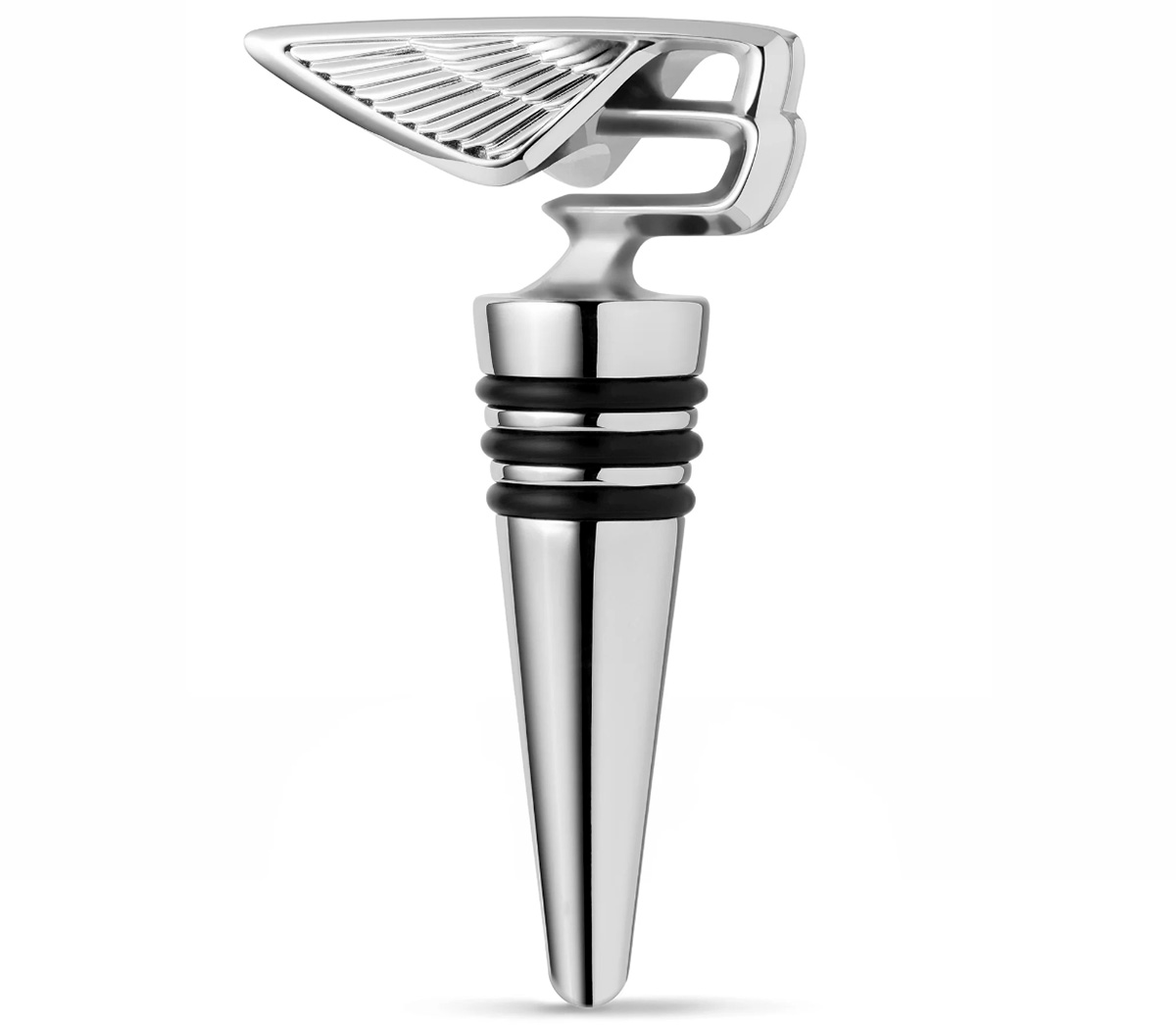
Pop your cork—in a good way—with a Bentley bottle stopper ($106), made of zinc alloy with chrome plating and rubber rings. The classy design is inspired by the automaker’s iconic “Flying B” mascot from 1930.
Subaru Motorsports Counter Stool
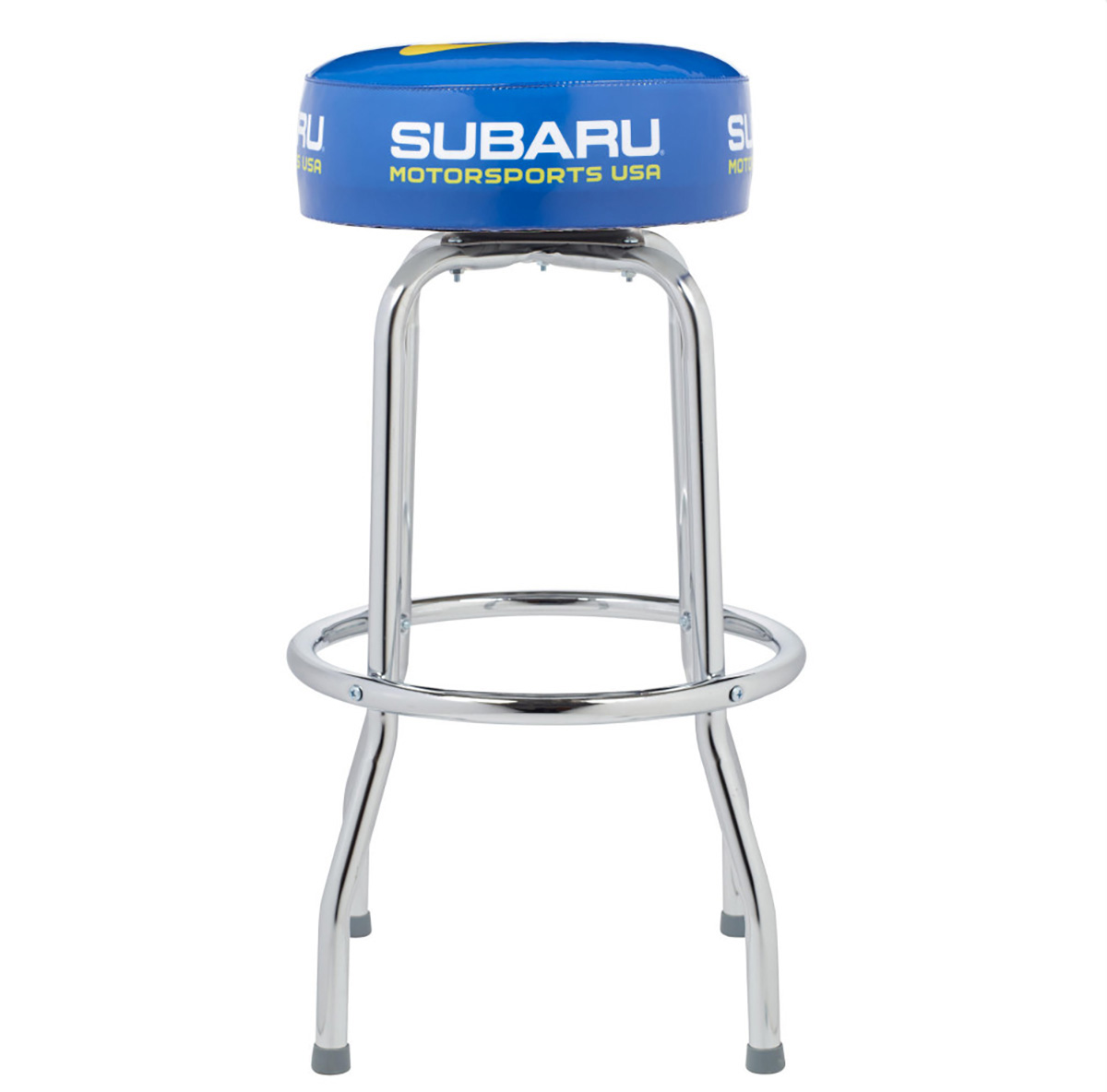
Belly up to the bar with the Subaru Motorsports Counter Stool ($175). The 30-inch-tall metal chair—with padded vinyl cover and automaker logo—is lightweight and swivels 360 degrees.
BMW Luxe Luggage
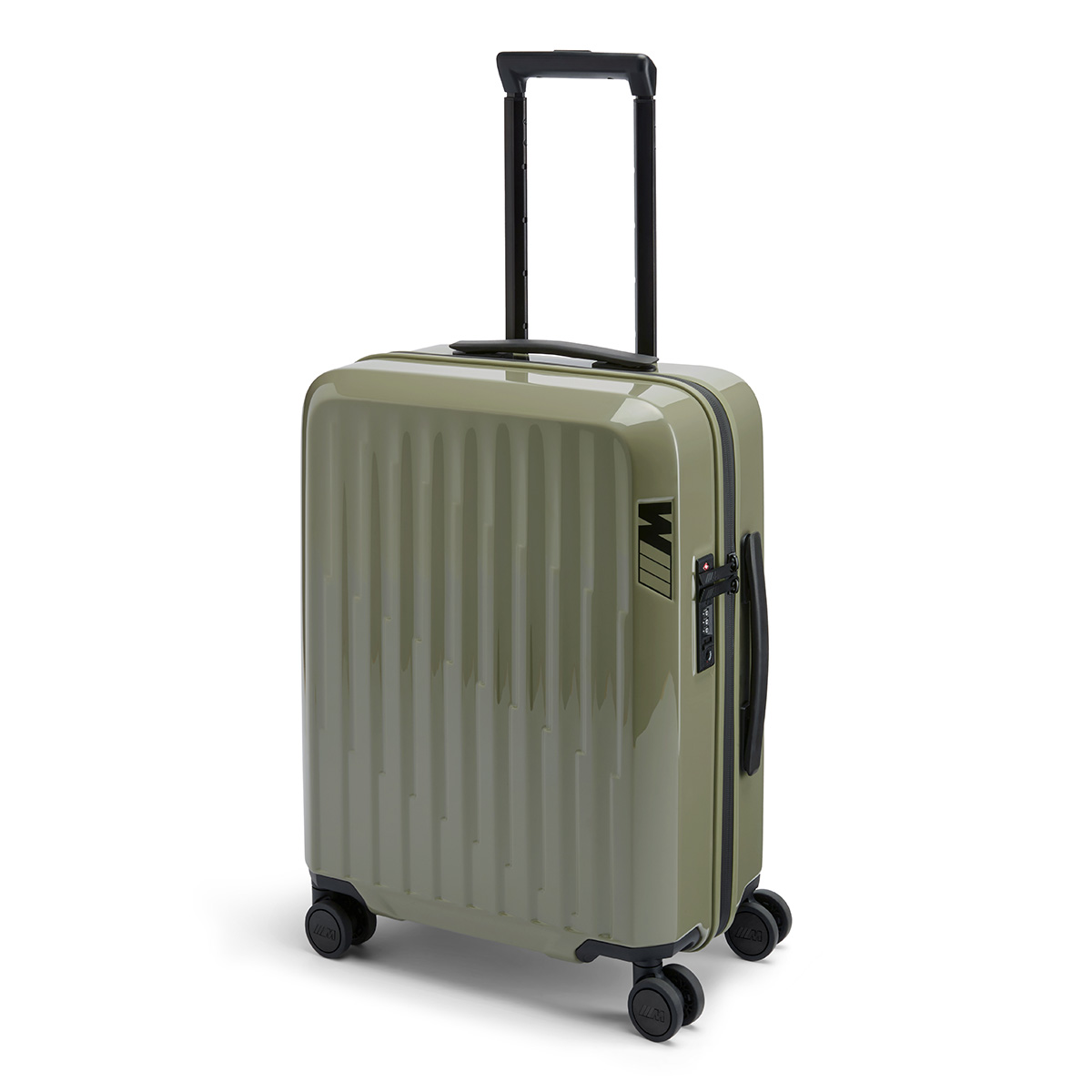
You won’t have trouble spotting this chic khaki-green BMW M Boardcase ($307) at airport baggage carousels. The high-performance “M” logo is etched on the durable polycarbonate casing, as well as on the main compartment zipper and all four of the sturdy double wheels. Comes with recycled lining, along with laundry and shoe bags.
Ford Yoga Gym Bag
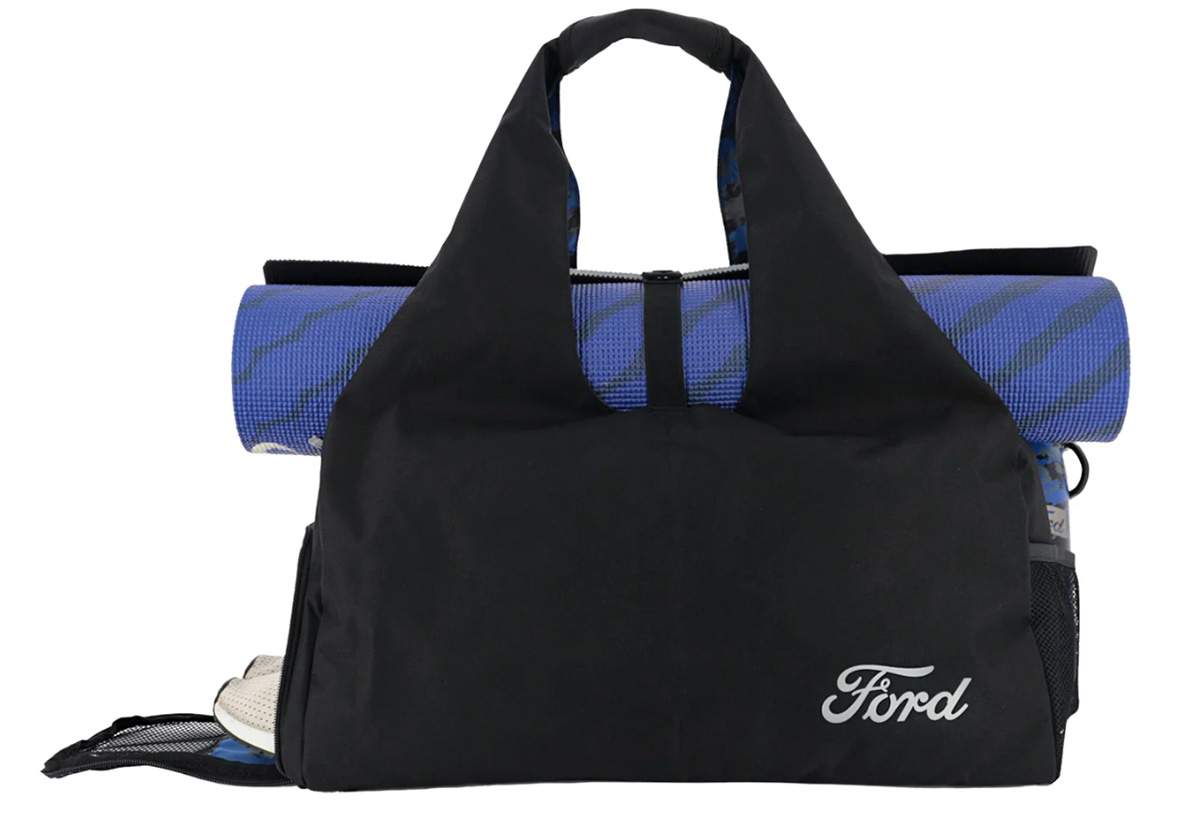
The Ford Yoga Gym Bag ($15) has a wide handle and button strap to securely carry a yoga mat, as well as convenient pockets to stow water bottles and shoes. Made of black polyester, with reflective silver Ford logo. (Yoga mat not included.)
Kia Mini Lamp with Speaker/Sound
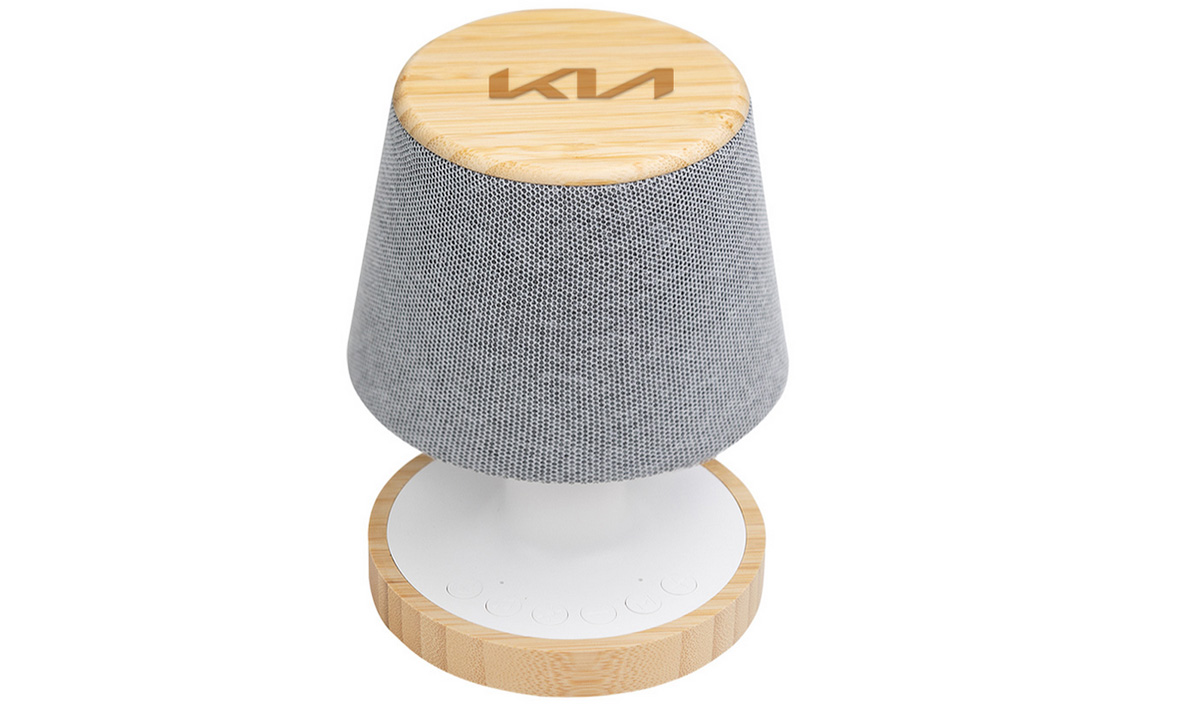
It doesn’t get much more Zen than a Kia Mini Lamp with Speaker and Sound Machine ($50). Made of bamboo, sturdy plastic and a fabric grill, the tiny wireless lamp has LED lighting with three settings. Pair with your phone to choose from eight soothing sounds: brook noise, bird chirp, forest bird, white bird, ocean wave, rainy day, wind and fireside.
Lexus Green Pro Set
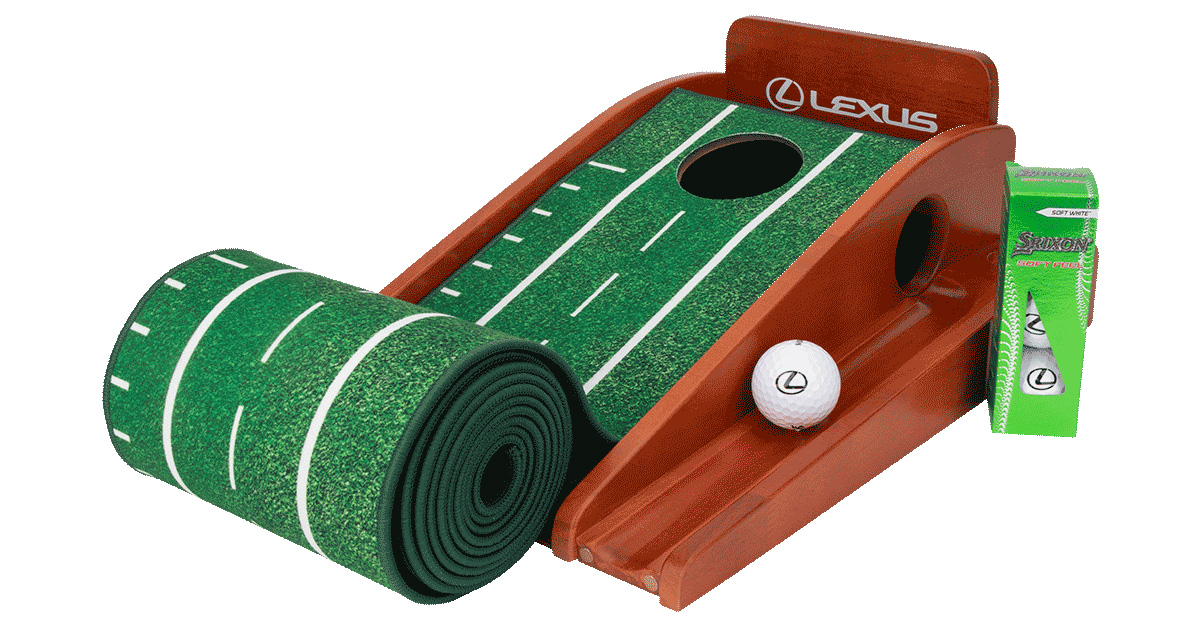
Practice makes perfect with the Lexus Green Pro Set ($257), a putting mat with “train-track markings” to help improve any golfer’s alignment. Lexus logo on the wood frame with automatic ball return.
Lamborghini Wireless Headphones

Turn on, tune in, drop out—well, at least at the end of a hectic day—with these Lamborghini Wireless MW75 Headphones by Master & Dynamic ($901). Batteries last up to 32 hours or up to 28 hours in active noise-canceling mode.
BMW Quatro Slim Travel Tumbler

The BMW Quatro Slim Travel Tumbler ($23) lives up to its name: sleek, smooth and scratch-resistant. Comes with leak-proof lid and non-spill design.
Ford Vintage Mustang Ceramic Mug

Giddy-up each morning with the Ford Vintage Mustang Ceramic Mug ($29). With cool blue stripes, the 14-ounce mug features a silver handle and iconic pony emblem.
My First Lamborghini by Clementoni
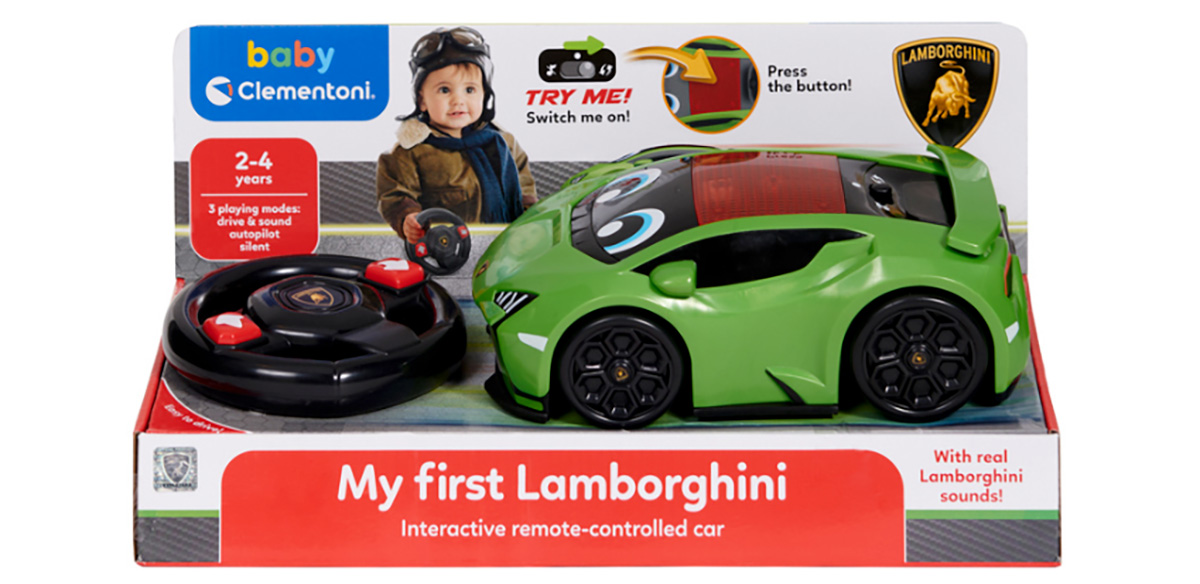
Proving it’s never too early to drive an exotic car, My First Lamborghini by Clementoni ($62) is for children ages two- to four-years old. Kids can activate the remote-control car by pressing the button on the roof or by using the remote. This Lambo certainly is less expensive than an entry-level Huracan, which starts at $250,000.
Rolls-Royce Cameo
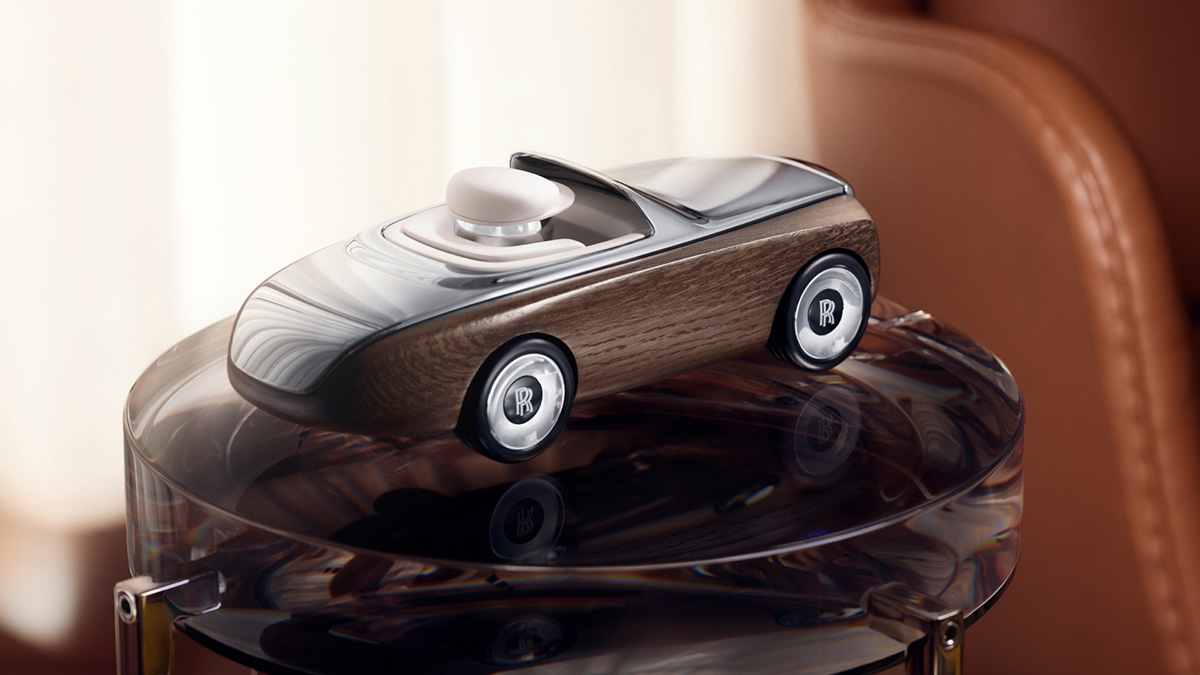
For adults looking for their own pint-sized luxury ride, there’s the Rolls-Royce Cameo ($5,500). Touted as a piece of art rather than a toy, this miniature collectible is made from the same solid oak and polished aluminum used in a real Rolls. As with those cars, this one even has self-leveling wheel-center caps (which operate independently of the hubcaps so that the RR logo is always in the upright position).
Maserati Notebook

For those of us who still love the art of writing, the Maserati MC20 Sketch Note ($11) is an elegant notebook with 48 sheets of high-quality paper. The front and back covers feature stylish sketches of the interior of a Maserati MC20 supercar and the Maserati logo. Comes with saddle-stitched binding using black thread.
Dodge Demon Dog Collar

If your pooch is more Fluffy-kins and less the guard dog you sometimes need it to be, then there’s the Dodge Demon Seatbelt Buckle Dog Collar ($30). Made of steel and high-density polyester with a tiny seatbelt-buckle clasp, the collar is emblazoned with devilish Dodge Demon logos.
Real Estate
In real estate, it’s déjà vu all over again
1970s and ‘80s volatility led to creative financing options
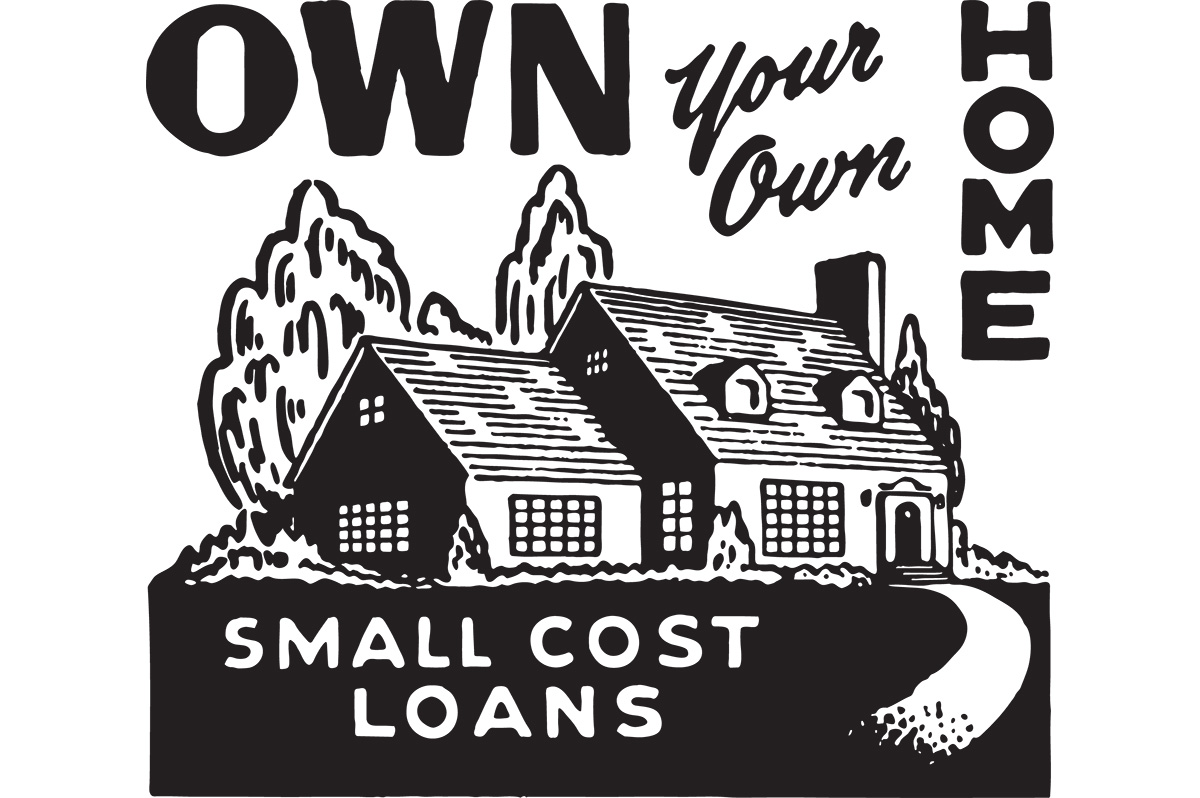
In the 1970s and 1980s, mortgage interest rates climbed into the double digits and peaked above 18%. With rates like that, you needed more than a steady job and a down payment to buy a home — you needed creative financing ideas.
Today’s market challenges may look different, but the response has been surprisingly familiar: unusual financing methods are making a comeback, along with some new ones that didn’t exist decades ago. Here is a brief overview of the most popular tools from that era.
Assumable Mortgages were available with FHA, VA, and USDA loans and, until 1982, even Conventional mortgages. They allowed a buyer to take over the seller’s existing mortgage, including its interest rate, rather than getting a brand-new loan, while compensating the seller for the difference between the assumed loan balance and the contract price.
Often, a seller played a substantial role in a purchase. With Seller Financing (Owner Carry) the seller became the bank, letting the buyer make payments directly to them instead of to a traditional lender.
One variation on Seller Financing was the Land Contract. The seller was still the lender, but the buyer made loan payments to the seller, who then paid his own mortgage and pocketed the difference. The buyer would receive equitable title (the right to use and occupy the property), while the seller kept the title or deed until the contract was paid off or the property sold.
With Wraparound Mortgages, the seller created a new, larger loan for the buyer that “wrapped” around the existing mortgage at an agreed-upon rate. The buyer would then pay the seller, who would continue making mortgage payments on the existing balance, collecting payments and pocketing the spread. Whether title conveyed to the buyer or remained with the seller was negotiated between the parties.
Unlike an assumption, when buying a home Subject To an existing mortgage, the buyer took title to the property and agreed to pay the seller’s mortgage directly to the lender plus any equity to the seller; the mortgage stayed in the seller’s name. Now, most mortgages have a Due on Sale clause that prohibits this kind of transaction without the expressed consent of the lender.
Rent-to-Own was also a popular way to get into a home. While a potential buyer rented a property, the seller would offer an option to purchase for a set amount to be exercised at a later date (lease option) or allow a portion of the rent collected to be considered as a downpayment once accrued (lease purchase).
Graduated Payment Mortgage (GPM) loans were authorized by the banking industry in the mid-1970s and Adjustable Rate Mortgages (ARM) surfaced in the early 1980s. Both featured low initial payments that gradually increased over time.
With the GPM, although lower than market to start, the interest rate was fixed and payment increases were scheduled. A buyer could rely on the payment amount and save accordingly.
ARMs, on the other hand, had interest rates that could change based on the market index, with less predictability and a higher risk of rate shocks, as we saw during the Great Recession from 2007-2009.
While mortgage rates today aren’t anywhere near the extremes of the 1980s, buyers still face a tough environment: higher prices, limited inventory, and stricter lending standards. That combination has pushed people to explore tried and true alternatives and add new ones.
Assumable mortgages and ARMs are on the table again and seller financing is still worth exploring. Just last week, I overheard a colleague asking about a land contract.
Lenders are beginning to use Alternative Credit Evaluation indicators, like rental payment history or bank cash-flow analysis, to assess borrower strength when making mortgage loan decisions.
There are Shared Equity Programs, where companies or nonprofits contribute part of a down payment in exchange for a share of the home’s future appreciation. With Crowdfunding Platforms, investors pool money online to finance real estate purchases or developments.
Another unconventional idea being debated today is the 50-year mortgage, designed to help buyers manage high home prices. Such a mortgage would have a 50-year repayment term, rather than the standard 30 years, lowering monthly payments by stretching them over a longer period.
Supporters argue that a 50-year mortgage could make monthly payments significantly more affordable for first-time buyers who feel priced out of the market. Critics, however, warn that while the monthly payment may be lower, the lifetime interest cost would be much higher.
What ties the past and present together is necessity. As long as affordability remains strained, creative financing – old and new – will continue to shape the way real estate gets bought and sold. As with everything real estate, my question will always be, “What’s next?”
Valerie M. Blake is a licensed Associate Broker in D.C., Maryland, and Virginia with RLAH @properties. Call or text her at 202-246-8602, email her at [email protected] or follow her on Facebook at TheRealst8ofAffairs.




















